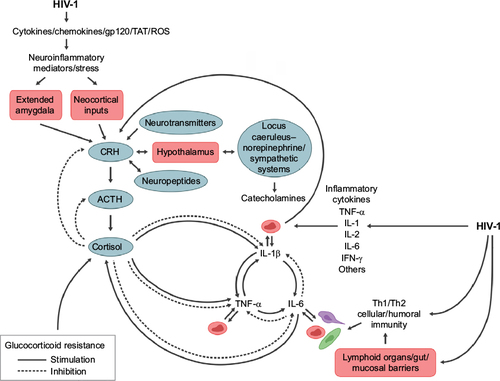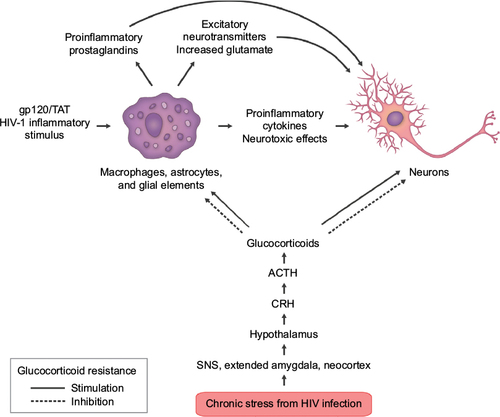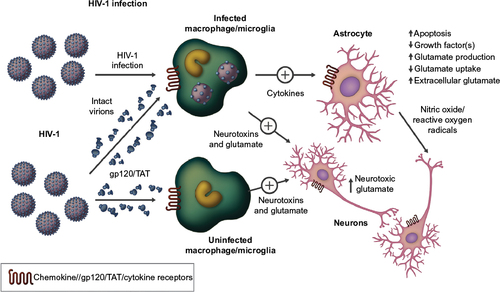Figures & data
Figure 1 The complex feedback and feedforward relations of neuroendocrine immune mediators in regulating the central nervous system and peripheral immune responses to HIV infection.

Figure 2 Some of the complex interactions of HIV infection in the central nervous system.

Figure S1 HIV infection in the central nervous system involves both HIV-infected and noninfected neuronal support cells.

